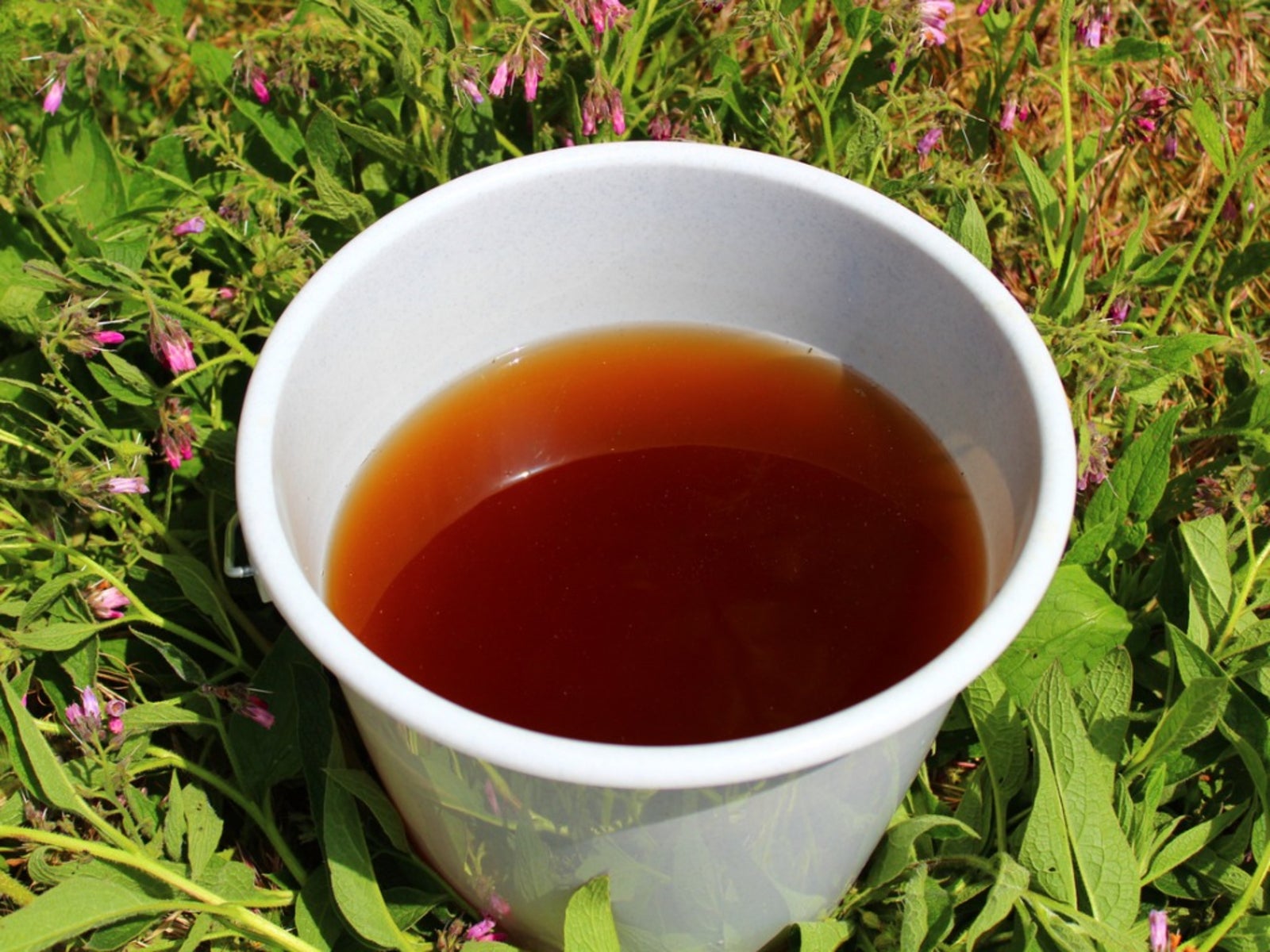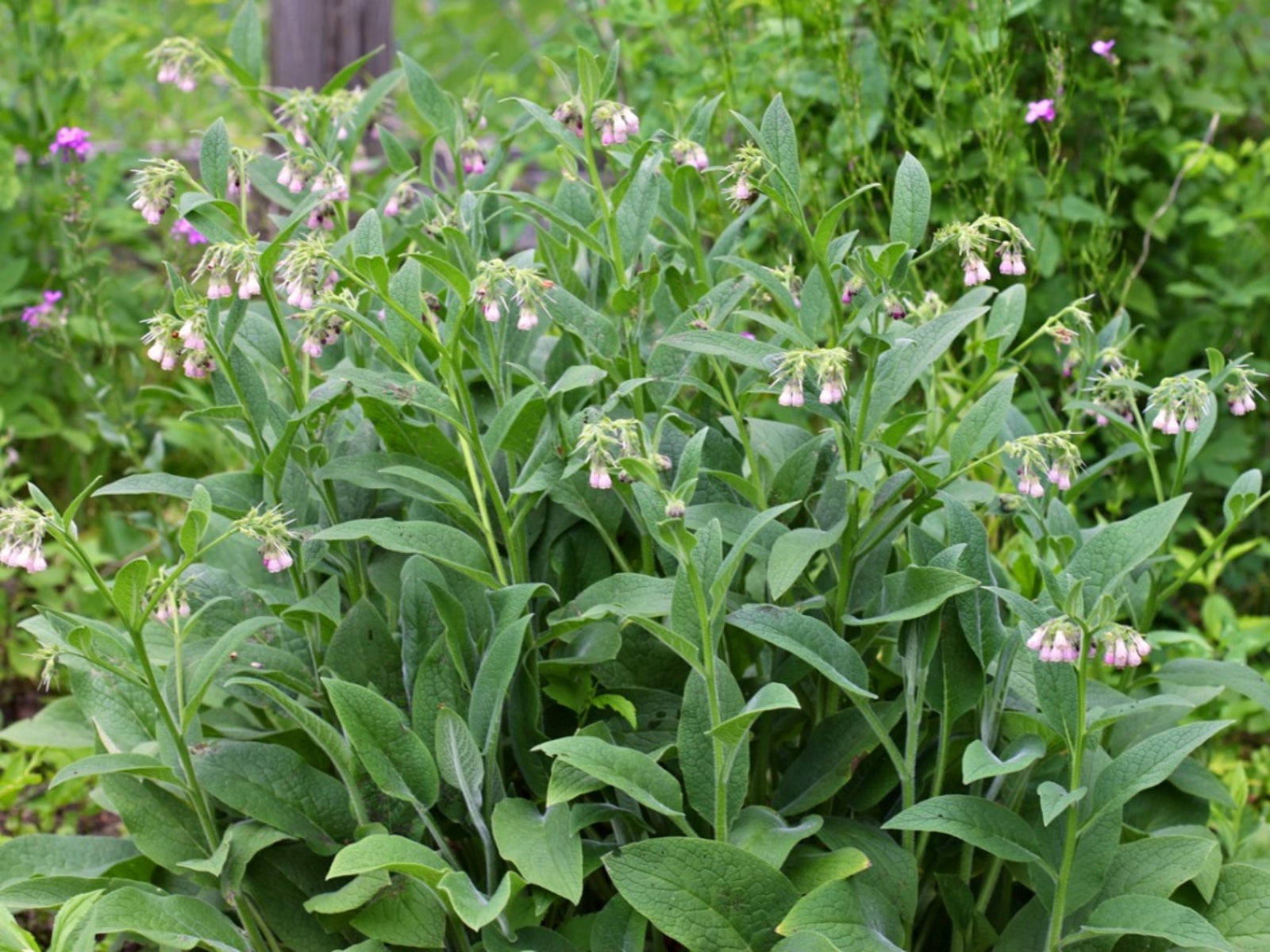Comfrey Fertilizer: Information About Comfrey Tea For Plants


Comfrey is more than just an herb found in cottage gardens and seasoning blends. This old fashioned herb has been used as both a medicinal plant and food crop for grazing animals and hogs. The large hairy leaves are an excellent source of the three macro-nutrients found in fertilizer. As such, it makes an excellent liquid fertilizer or composted tea to feed plants and help reduce insect pests. Making comfrey tea for plants is easy and requires no special skills or tools. Try comfrey fertilizer on your plants and see the benefits in your garden.
Comfrey as a Fertilizer
All plants need specific macro-nutrients for maximum growth, bloom, and fruiting. These are nitrogen, phosphorus, and potassium. Much like humans, they also need micro-nutrients such as manganese and calcium. Comfrey has the three major nutrients plus high levels of calcium, which can be very beneficial if harvested and made into comfrey tea for plants. This nutrient-rich food is applied as a liquid soil drench or as a foliar spray. The composted leaves yield a rich deep greenish brown liquid. The nitrogen content in comfrey fertilizer helps with green leafy growth. The phosphorus helps the plants remain vigorous and fight off disease and pest damage. Potassium is instrumental in flower and fruit production.
Comfrey Plant Food
Comfrey is a hardy perennial plant that grows quickly. The plant needs no special care and grows in partial shade to sun. Harvest the leaves and put them just halfway in a container. Wear long sleeves and gloves to protect your hands and arms from the prickly hairs on the leaves. Making comfrey tea will only take a few weeks. Weight the leaves with something heavy to hold them down and then fill the container with water. In about 20 days you can strain out the leaves and the deep brew is ready to add to your containers or spray on garden beds. Dilute the comfrey plant food with water by half before you apply to plants. Use the removed leaf debris as a side dressing along your vegetable plants. You can also try using comfrey as mulch or as a compost enhancer.
Comfrey Fertilizer and Mulch
The herb's leaves are easy to use as mulch. Nature will take its course and soon complete the rotting process, allowing the nutrients to seep into the ground. Just spread the leaves around the edges of plant roots and then bury them with 2 inches (5 cm.) of soil. You can also dig a trench 6 to 8 inches (15-20 cm.) deep and bury chopped up leaves. Plant fruiting vegetable seeds on top but avoid leafy and root crops. Comfrey as a fertilizer has many forms, all of which are easy to use and make. The best thing about the plant is you can cut the leaves several times in a season for a constant supply of this nutrient-rich, useful herb.
Gardening tips, videos, info and more delivered right to your inbox!
Sign up for the Gardening Know How newsletter today and receive a free copy of our e-book "How to Grow Delicious Tomatoes".

Bonnie Grant is a professional landscaper with a Certification in Urban Gardening. She has been gardening and writing for 15 years. A former professional chef, she has a passion for edible landscaping.
-
 Looking For Plants To Give You The Soft And Fuzzies? Try These 5 Fuzzy Leaf Plant Options
Looking For Plants To Give You The Soft And Fuzzies? Try These 5 Fuzzy Leaf Plant OptionsLovers of texture, drama, silver foliage and tactile plants will adore these special sensory garden additions. These fuzzy leaf plant options will leave you all aglow
By Susan Albert
-
 Get Ready For A Summer Of Hummers! Grow These Full Sun Hummingbird Plants and Flowers
Get Ready For A Summer Of Hummers! Grow These Full Sun Hummingbird Plants and FlowersIf you’re lucky enough to enjoy a sunny backyard, make sure you are maxing out on your pollinator opportunities and grow these full sun hummingbird plants and flowers
By Tonya Barnett
